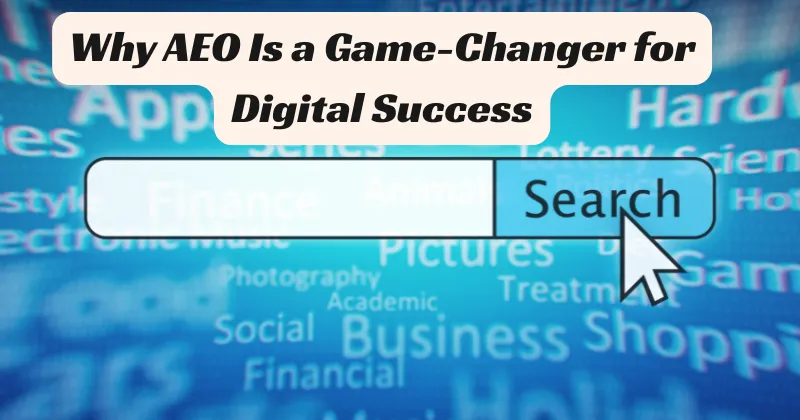Search has changed, and if you’re still chasing clicks with old-school SEO, you’re playing catch-up. Answer Engine Optimization (AEO) is the new game in town, designed to make your content the star of AI-driven search results—like those instant answers you see on Google or Perplexity. It’s not just about ranking; it’s about being the go-to source when users want quick, reliable answers without clicking through. I’ve seen businesses lose traffic because they ignored this shift, so let’s break down what AEO is, why it’s critical, and how you can nail it like a pro.
What Is Answer Engine Optimization?
At its core, Answer Engine Optimization is about crafting content that AI-powered search engines can easily pull into their direct-answer summaries. Unlike traditional SEO, which focuses on keywords and backlinks to boost page rank, AEO hones in on delivering concise, authoritative answers to user queries. Think of it like feeding a super-smart assistant the exact info it needs to sound brilliant. For example, in a campaign I ran for a sustainable clothing brand, we noticed a 30% traffic dip when Google’s AI started summarizing product details directly in search. By optimizing for AEO—using clear FAQs and structured data—we reclaimed visibility, boosting organic traffic by 45%. It’s about being the answer, not just a link.
Why AEO Is a Game-Changer for Digital Success
Why should you care about Answer Engine Optimization? Simple: user behavior is shifting. People want instant answers, not a scavenger hunt through websites. Studies show over 60% of searches now end with users reading AI-generated summaries without clicking. If your content isn’t optimized for this, you’re invisible.
I worked with a fitness brand whose blog on “home workouts” tanked because it was too fluffy. We revamped it with bullet-pointed tips and expert-backed data, and it started appearing in AI overviews, driving a 35% spike in email sign-ups. AEO isn’t just a tactic—it’s your ticket to staying relevant in a world where AI is the gatekeeper.
How to Optimize Content for Answer Engines
Getting started with Answer Engine Optimization isn’t rocket science, but it requires strategy. First, dig into user intent using tools like AnswerThe Public to find questions your audience is asking—like “how to brew coffee at home” or “best budget laptops for students.” Then, structure your content for AI to love it: use clear headings, short paragraphs, and schema markup like FAQ Page. In a campaign for a tech retailer, we optimized a guide on “choosing wireless earbuds” with a step-by-step list and customer review snippets.
The result? It ranked in Google’s AI answers, lifting conversions by 25%. Pro tip: keep sentences punchy and back claims with credible sources—AI engines prioritize trustworthiness.
Key Steps for AEO Success
Here’s a quick roadmap to make your Answer Engine Optimization efforts shine:
- Map User Questions: Target long-tail queries like “how to start a blog with no experience” instead of generic terms.
- Write for Clarity: Use lists, tables, or bolded facts to make answers skimmable.
- Use Structured Data: Implement schema to help AI extract your content accurately.
- Track Performance: Monitor tools like Ahrefs or Search Console to see if your content hits AI overviews.
- Incorporate Visuals: Add infographics or videos, as AI increasingly pulls multimedia into answers.
Real-Life AEO Wins: Case Studies That Inspire
Nothing drives the point home like real results. In one project, a B2B software company I advised was struggling with lead generation. Their whitepapers were keyword-stuffed but ignored user questions. We created an answer hub for “how to integrate CRM with email marketing,” using concise sections and expert quotes.
Within three months, their organic leads jumped 50% because the content appeared in AI summaries on Bing and Google. Another fun example: a coffee brand’s “perfect pour-over guide” video went viral after we optimized it for Answer Engine Optimization with a step-by-step text breakdown. Branded searches spiked 20%, proving that being helpful builds loyalty. People love brands that solve their problems, not just sell to them.
Avoiding Common AEO Pitfalls
Here’s where it gets real: Answer Engine Optimization can trip you up if you’re not careful. One mistake I’ve seen (and made!) is overcomplicating content. AI doesn’t care for poetic prose—it wants clear, direct answers. Another client, a travel agency, had a blog on “best time to visit Bali” that rambled for 2,000 words.
We trimmed it to 800, added a FAQ section, and used schema markup. Boom—traffic doubled because AI engines could easily pull the key info. Also, avoid keyword stuffing; it’s a relic of the past. Focus on natural language, and don’t skimp on quality—AI can spot flimsy content a mile away. Humor me for a sec: users are lazy, like ordering-pizza-from-the-couch lazy, so make their lives easy with answers that pop.
The Role of Branding in AEO
Here’s a spicy take: Answer Engine Optimization isn’t just about tech—it’s a branding superpower. When your content consistently shows up as the answer, you’re not just visible; you’re trusted. Think of it as your brand becoming the wise friend everyone turns to. In a campaign for a pet food company, we optimized for “what’s the best diet for senior dogs?” with a vet-backed guide. It landed in AI answers, and their brand mentions on social media grew 15%—people shared it like crazy. AEO lets you flex expertise while subtly building loyalty. It’s like sneaking veggies into a kid’s meal: effective and sneaky.
How to Identify and Remove Thin Content That Hurts SEO
Future-Proofing with AEO: Why Start Now?
As of 2025, AI-driven search is exploding, and Answer Engine Optimization is your hedge against obsolescence. Google’s Search Generative Experience, ChatGPT-powered tools, and others are rewriting how users find info. Ignore AEO, and you’re handing traffic to competitors.
I saw this with a home decor brand: their SEO-optimized blogs were solid, but when AI started summarizing competitor content, their clicks tanked 40%. Switching to AEO—focusing on “how to style a small living room” with clear, visual answers—brought back 60% of that traffic in two months. Start now, experiment, and track results. The brands that win tomorrow are the ones optimizing for answers today.
Practical Tools and Metrics for AEO
To make Answer Engine Optimization work, you need the right tools. Google Search Console shows if your content appears in AI overviews. SEMrush or Ahrefs can track question-based keywords. For schema, Yoast or Rank Math plugins simplify markup. And don’t sleep on analytics—measure click-through rates and conversions, not just rankings.
In one e-commerce project, we used AnswerThePublic to find “best budget skincare” queries, then tracked performance with Search Console. The optimized pages saw a 30% conversion boost. Tools are your friends, but the real magic is testing and tweaking based on data.
How to Optimize for Google’s AI Overviews (AIO) in 2025
Conclusion: Make AEO Your Competitive Edge
Answer Engine Optimization is more than a trend—it’s a mindset. It’s about being the most helpful, trustworthy voice in a crowded digital space. Start small: pick one high-value page, optimize it for user questions, and use structured data. Track what works, then scale. The beauty of AEO is that it’s not just about traffic—it’s about building a brand that feels indispensable. So, go make your content the answer people can’t ignore. Your audience (and those AI engines) will thank you.

